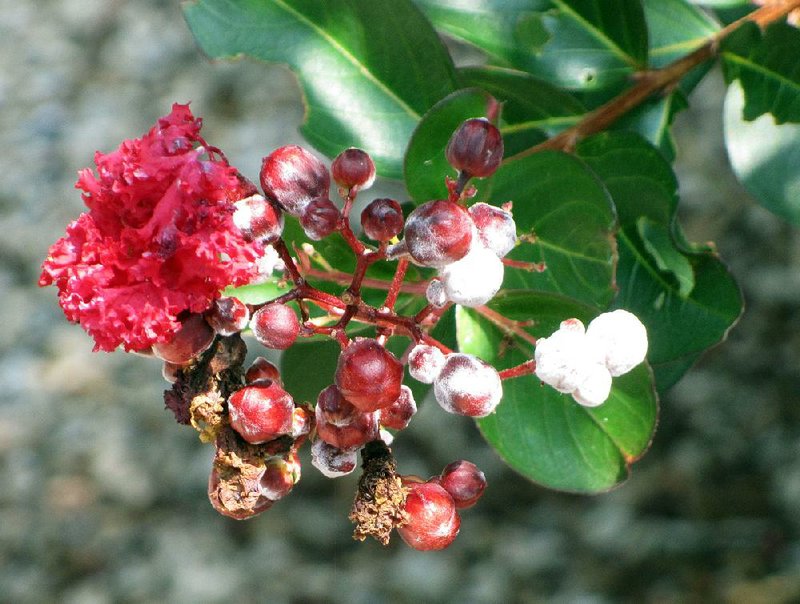Q My dogwood leaves look bad with spots all over them. What should I spray with to stop this disease?
A Our mild, wet summer has led to more leaf spotting diseases than normal, but this late in the season it is not cause for concern. Rake the leaves as they fall and get rid of them. Watch the new growth in the spring, and if you see problems, then consider spraying. Right now there are few dogwoods or hydrangeas that don't have some leaf damage.
Q I have a 25-year-old magnolia tree. It is a good size but has never bloomed. I took soil samples to the local University of Arkansas Extension Service office and had them checked. I added the lime they told me to add last year; however it has not bloomed. Suggestions are appreciated.
A How much sunlight does the magnolia get? It would need at least six to eight hours per day in order to set flowers. How is the tree growing? If the tree is still small after 25 years, I would say you might have a problem with soil nutrition, but if the tree is growing well but just not blooming, my guess would be a lack of sunlight.
Q I have a young rose of Sharon, variegated, that has ants all over new blooms. Can I spray it with something or is there nothing to be concerned about?
A I bet you have a lot of aphids as well. Aphids give off a very sweet substance called honeydew that ants are attracted to. Occasionally, ants will even be "aphid ranchers" and manage the aphid population. A strong spray of water or insecticidal soap should do the trick.
Q We just moved to Conway from Little Rock. I had 14 hydrangeas in my yard. I took cuttings from several and have rooted them. They are now about 5 inches tall. Should I get them into the ground now or wait until the spring? Overwintering them could be difficult.
A Plant them ASAP. The sooner they get a root system established the better. Be sure to keep them watered and mulched. If we have a really cold winter you could have some damage, but with a good layer of mulch the roots should send out new growth as long as each plant has a good root system.
Q A friend of mine showed me pictures of her beautyberry bush last year with beautiful purple berries. Her plant is loaded with fruit now, too, but the berries are still green. Where can I buy one? Does it need sun or shade?
A American Beautyberry or French mulberry are the common names for Callicarpa. Many nurseries carry them. Call your local nursery and see if they have them or can get you one. If your friend has a well established plant, you could also transplant a sucker from hers this fall or early winter. It does well in full sun to partial shade.
Q I have just recently been seeing something on our crape myrtles that I've never seen before. Can you please tell me: What is this white fuzzy stuff? Is it harmful, and, most importantly, how do I get rid of it?
A It is powdery mildew, a common fungal disease of crape myrtles. The frequent rains and high humidity have made it worse this late in the season. Some varieties are more susceptible than others, but from the photo it looks as if your foliage is fairly clean. I would deadhead -- cut off the infected blooms and see if you might not get another set of flowers that are not affected. I would not advise spraying this late in the season.
Janet B. Carson is a horticulture specialist for the University of Arkansas Cooperative Extension Service. Write to her at 2301 S. University Ave., Little Rock, Ark. 72204 or email her at
jcarson@arkansasonline.com
HomeStyle on 08/26/2017
